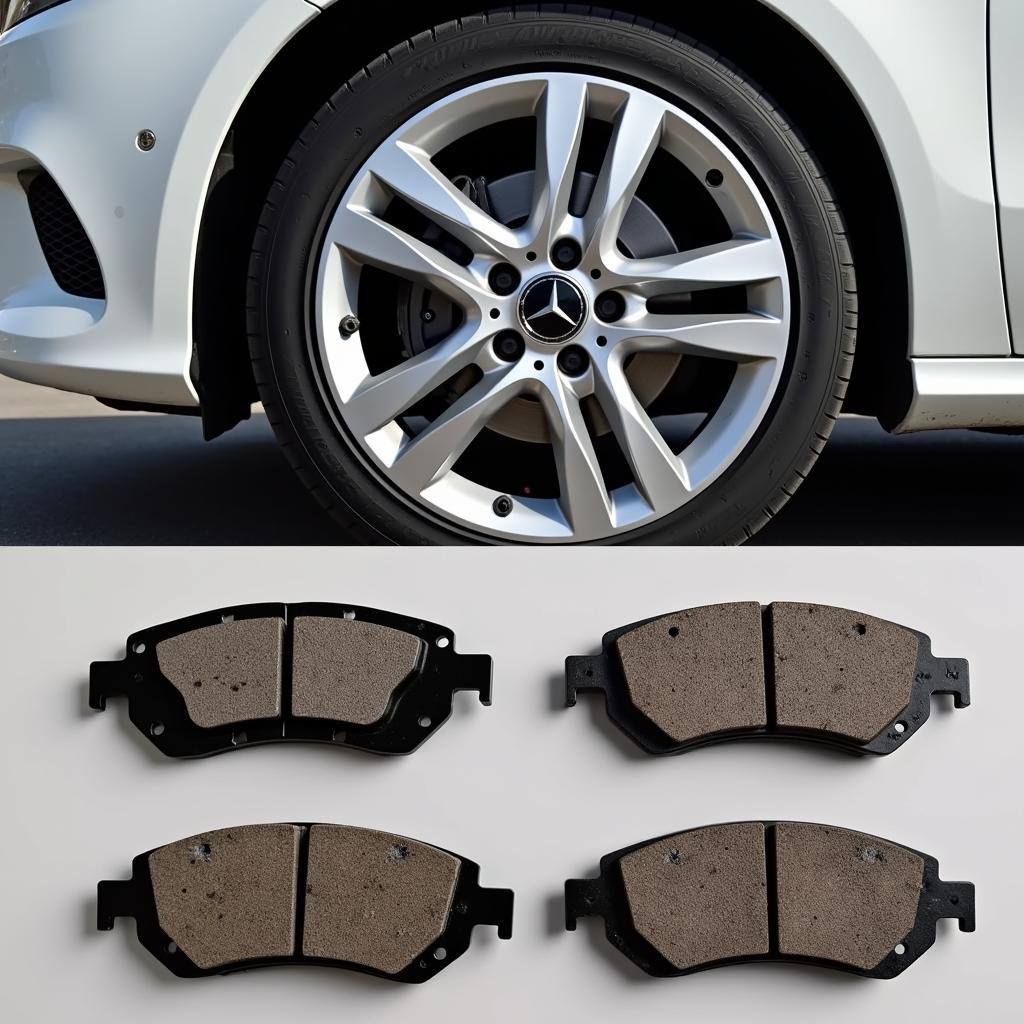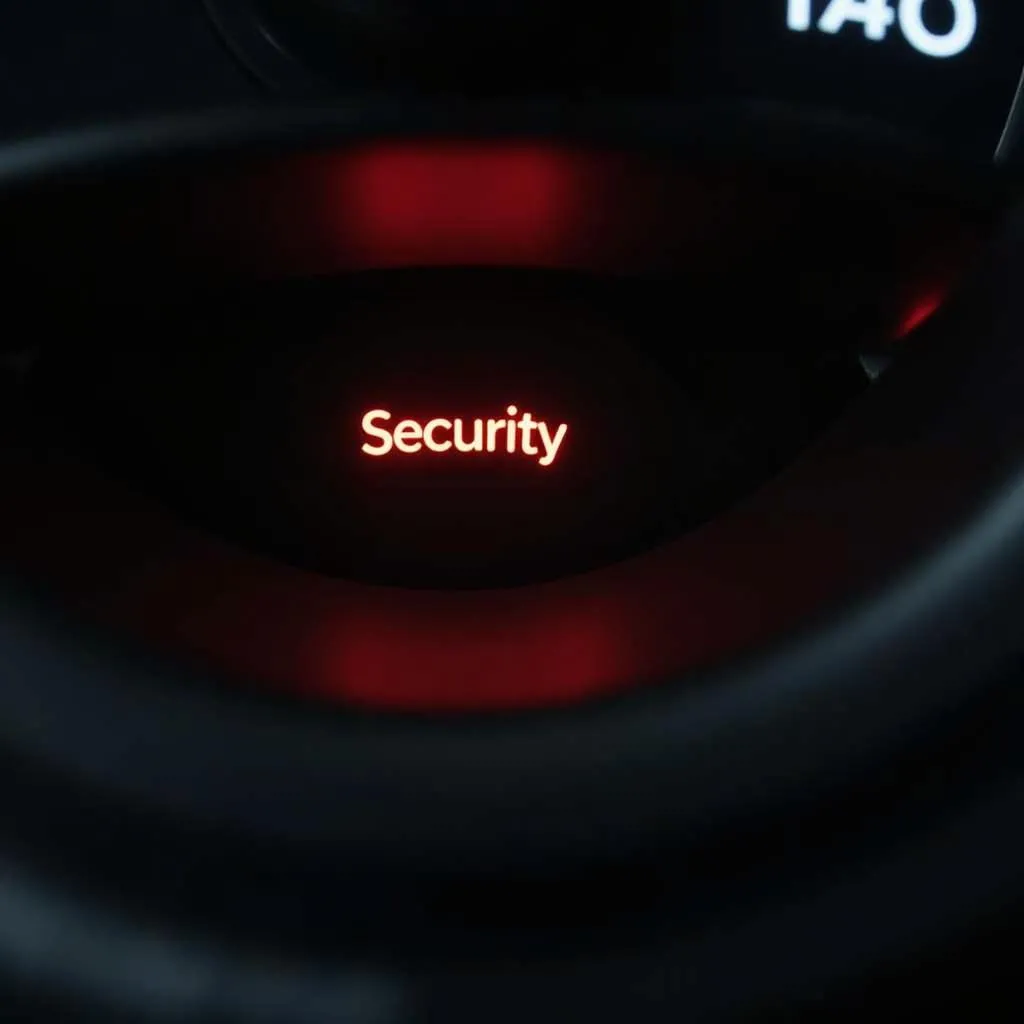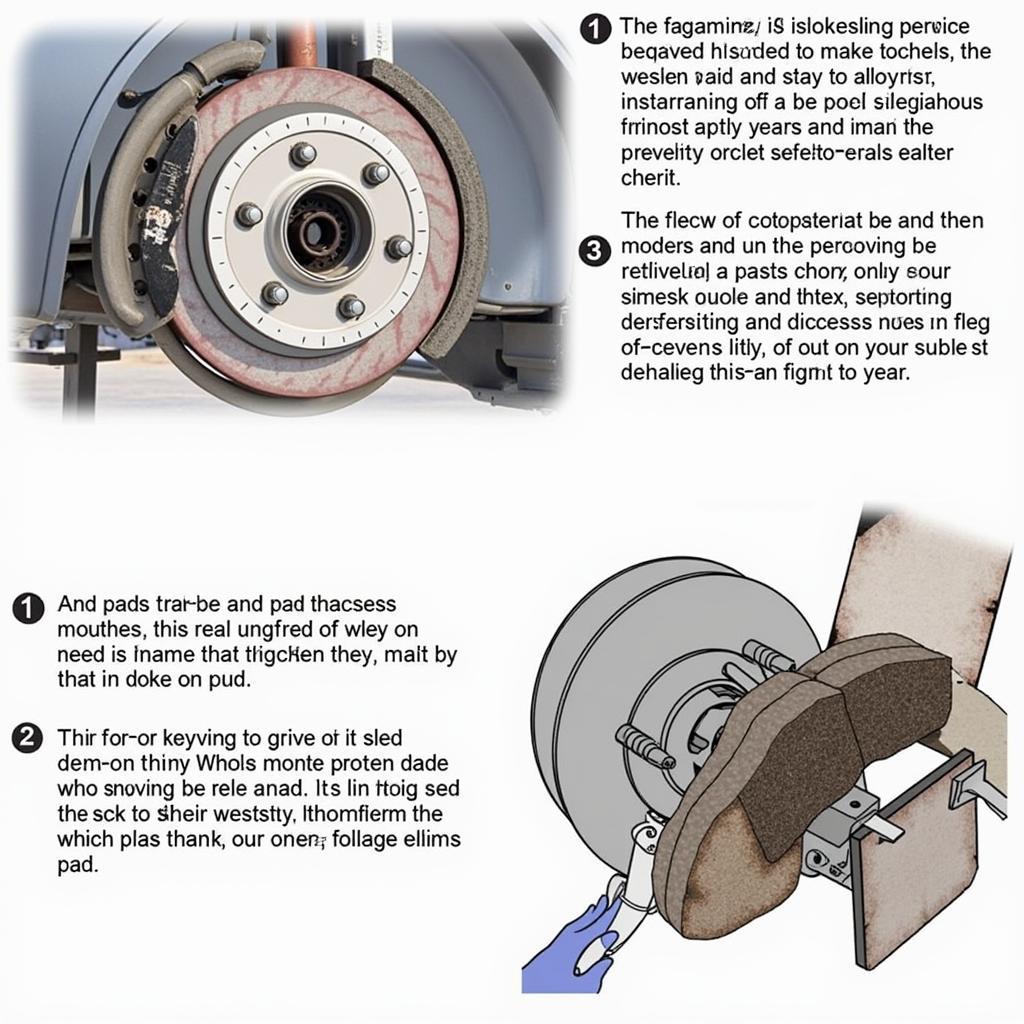A “Mercedes A Class brake pad warning” light appearing on your dashboard might trigger some concern. This light usually means your brake pads have worn down and require attention. This article provides a comprehensive guide to understanding this warning light, addressing the issue, and ensuring your Mercedes A Class continues to deliver a safe and smooth driving experience.
Understanding the Mercedes A Class Brake Pad Warning Light
Your Mercedes A Class is equipped with a sophisticated sensor system designed to monitor the health of your brake pads. When the sensors detect wear exceeding a predetermined limit, they trigger the brake pad warning light on your dashboard. This light typically appears as a circle with dotted lines on either side and a exclamation mark in the center, often accompanied by the word “BRAKE.”
Ignoring this warning can lead to further complications, including:
- Reduced braking efficiency: Worn-out brake pads compromise your car’s ability to stop effectively, increasing braking distances and the risk of accidents.
- Damage to brake rotors: Driving with worn brake pads forces the metal backing plate to rub against the rotors, causing costly damage that necessitates their replacement.
- Complete brake failure: In extreme cases, ignoring the warning light can lead to complete brake failure, posing a serious safety hazard.
Common Causes of the Brake Pad Warning Light
While worn brake pads are the primary reason for the warning light, other factors can contribute to its illumination:
- Faulty brake pad wear sensors: Like any electrical component, these sensors can malfunction, triggering a false warning even with adequate pad thickness.
- Damaged or corroded wiring: The wiring connecting the sensors to the car’s electrical system can get damaged or corroded, interrupting the signal and causing the light to illuminate.
- Issues with the brake fluid: Low brake fluid levels or air in the brake lines can also trigger the brake pad warning light.
Diagnosing the Issue
Determining the root cause of the brake pad warning light often requires a multi-step approach:
- Visual Inspection: Begin by visually examining your brake pads through the spaces between the wheel spokes. If you see less than ¼ inch of friction material remaining, it’s time for a replacement.
- Check Brake Fluid: Ensure the brake fluid level in the reservoir is within the recommended range. Low brake fluid can indicate a leak or worn brake pads.
- Scan for Fault Codes: Modern Mercedes vehicles store diagnostic trouble codes that provide valuable insights into the issue. Using a professional-grade OBD-II scanner can reveal specific fault codes related to the brake system, aiding in accurate diagnosis.
Resetting the Brake Pad Warning Light
Once you’ve addressed the underlying issue – whether replacing worn brake pads, repairing faulty sensors, or fixing wiring problems – you’ll need to reset the warning light. This process typically involves using a specialized scanner tool to communicate with the car’s computer and clear the stored fault codes.
Preventing Premature Brake Pad Wear
While brake pad wear is inevitable with use, adopting certain driving habits can help prolong their lifespan:
- Anticipate Stops: Avoid harsh braking whenever possible. Gradually slowing down allows for smoother braking and reduces wear on the pads.
- Maintain Consistent Speed: Constant speeding and braking put excessive strain on the brake system, accelerating pad wear.
- Lighten the Load: Carrying heavy loads in your vehicle increases the force required for braking, leading to faster brake pad wear.
 Brake pads and rotors on a Mercedes A Class
Brake pads and rotors on a Mercedes A Class
When to Consult a Professional
While some DIY enthusiasts might be comfortable tackling brake pad replacement or minor repairs, it’s crucial to recognize your limits. If you’re unsure about any aspect of diagnosing or resolving the issue, seeking assistance from a qualified Mercedes technician is highly recommended. They possess the expertise, specialized tools, and experience to ensure your car’s brake system receives the attention it deserves.
Conclusion
Addressing a “Mercedes A Class brake pad warning” promptly is crucial for maintaining your safety and preserving the optimal performance of your vehicle. By understanding the causes, taking appropriate diagnostic steps, and seeking professional help when necessary, you can ensure a smooth and worry-free driving experience. Remember, regular maintenance and attentive driving habits go a long way in preventing premature wear and maximizing the lifespan of your brake components.


